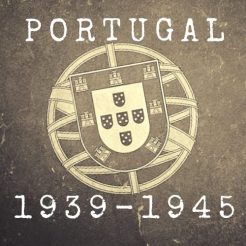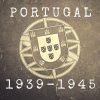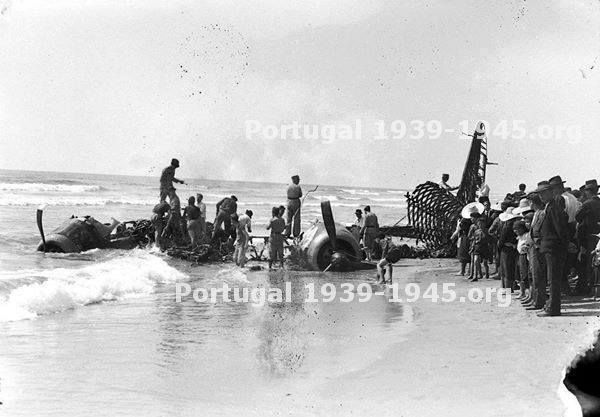
The Wellington that ditched near Vila do Conde
(Photo: J. Freguesia Vila Chã)
Date
Location
Force
Aircraft
From-To
Crew
30-05-1942
Vila do Conde (in the sea)
RAF 1 OADU
Vickers Wellington IC HX390
Portreath (GB) → Egipto
P/O J. P. Anstey GB
Sgt H. Jakson GB
Sgt M. H. Thompson GB †
Sgt J. W. Gould GB
Sgt I. Wallace-Cox GB
Sgt John Gordon Daniels GB †
The plane hit the waves at 11.30 am on May 30, 1942, about 300 meters from the beach of Mindelo, next to some boulders known locally as “Guilhada Stones”. The collision resulted in two deaths and three injuries among the four survivors.
The impact on the water broke the plane in two. The mortal victims were Daniels and Thompson who are buried in the cemetery of St James in Oporto. Gould came out with a dislocated left shoulder, Jakson fractured his left arm in three places. Both managed to climb to one of the wings that was left afloat. Cox, with a slight wound to his left knee, and Anstey, who escaped unharmed, managed to get into a rubber dinghy.
The disaster was observed from land by several witnesses. The sea proved to be treacherous and seeing that no one from Mindelo beach went into the water to save them, six fishermen from Vila Chã jumped into a small boat - known locally as a Catraia - and managed to rescue the survivors. The dead would be recovered later by the Póvoa do Varzim lifeboat and by a vessel from Leixões.
The British, who for about half an hour were at the mercy of fate, later acknowledged in statements of the inquiry that they were “astonished with the courage of the fishermen as they had fallen into the surf and were next to a rocky place”.


The fishermen of Vila Chã who saved the aviators. From left to right: Manuel Carneiro, José Mário da Silva, Cândido de Augusto Ramos, Egídio Alves Neto, José Mário da Silva and Carlos Alberto dos Santos. Sitting down is Manuel da Silva Oliveira (Arrais). Document with the offer of 500 escudos.
(Pictures: Junta de Freguesia de Vila Chã)
For their courage the British Embassy would offer each of the Portuguese a reward prize of 500 escudos. A high amount of money for the time. Zulmira Ramos, the daughter of one of the fishermen, would recall decades later that it was used to pay the entry fee for the purchase of the family home, which then costed four thousand escudos.
Sergeants Joseph William Gould and Harold Leslie Jackson were first interned at the Hospital of Vila do Conde and later at the Military Hospital in Oporto.
Anstey and Cox spent a short period at the premises of the Army’s 1st Group of Subsistence Companies, in Póvoa do Varzim, and then were lodged at the Grande Pensão Moderna, in the same city. They stayed there until June 30, 1942, when they continued to Caldas da Rainha. Both returned to England on 12 July.
The aircraft came from England and was destined for Libya, with stopovers scheduled in Gibraltar and Malta.
During the trip, the engine on the right side began to give problems. The crew dumped the main gasoline tanks installed in the wings and in the lower part of the fuselage in an attempt to lighten the weight of the plane.
Knowing that they could not reach their destination, they tried to reach the Portuguese coast. Three times they issued a SOS where they also gave their position, a signal picked up by the Rádio Naval de Lavadores station, in the Leixões area.
Before trying to land, they dropped all the bombs they were carrying and aimed for the beach. They were flying about 10 meters above the waves, when they stalled - possibly due to a faulty engine - and fell into the sea.
On the local Port Authority they gathered several spoils that washed up on the coast after the disaster, namely, articles of clothing, war material, letters and documents, wads of banknotes (lire and francs). This material was all delivered to the English Consulate in Porto.
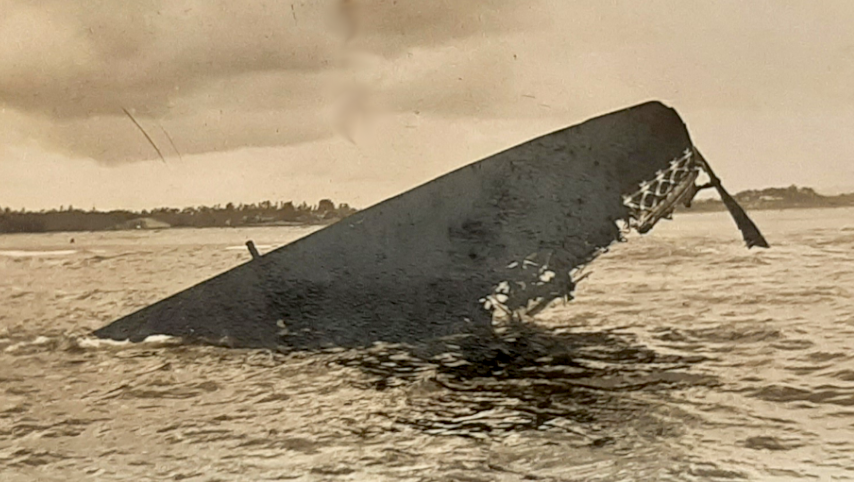
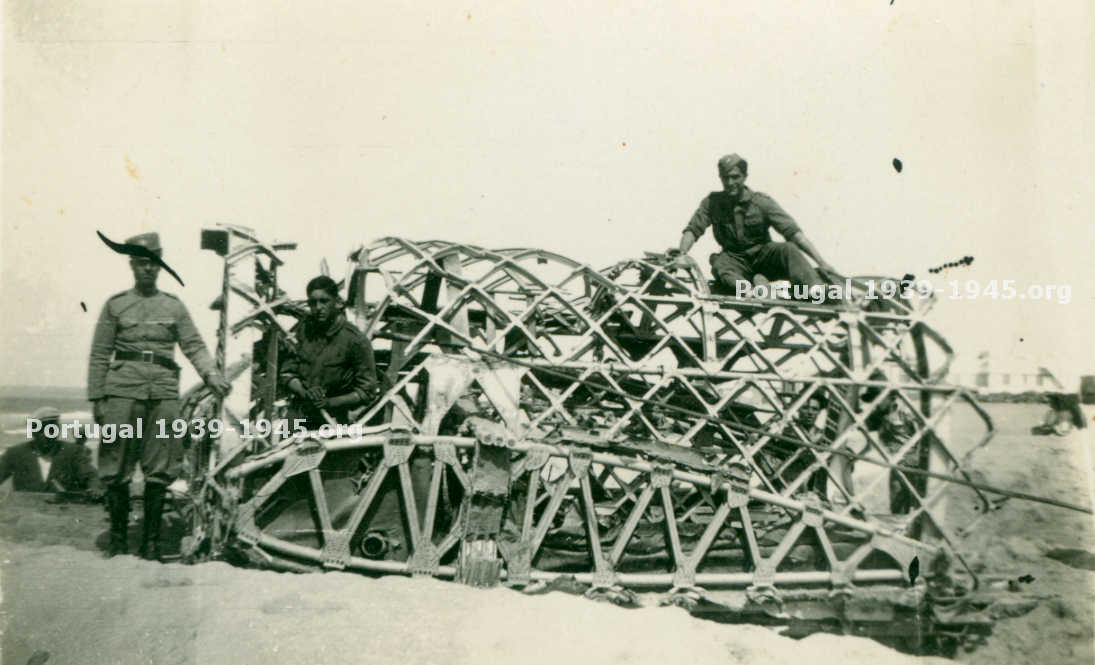
Floating Wing of the Wellington. Recovery work on the wreckage of the aircraft on Mindelo beach.
(Photos courtesy of João Viégas)
The plane fell in a shallow place - about 7 fathoms (less than 14 meters) -, and on the 2nd of June, under the orders of Captain-Pilot Tovar Faro, an attempt was made to remove it from the water with the help of a diver, but he couldn't find it.
The recovery of the wreckage would only happen weeks later when an army unit specialized in these operations dismantled it with the help of local labor.
Wallace-Cox died on 27-07-1943 and is buried in Ashbourne Cemetry, in the United Kingdom.
Carlos Guerreiro
Resources:
Evade & Escape Report - National Archives/ London Kew § Mário Canongia Lopes § Bruno Costa § Arquivo Histórico do Exército § João Viegas
